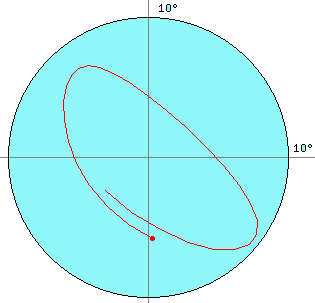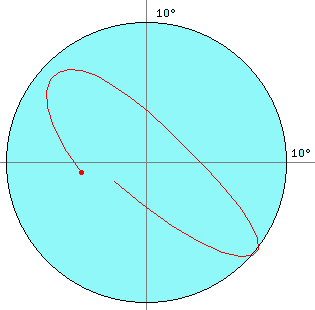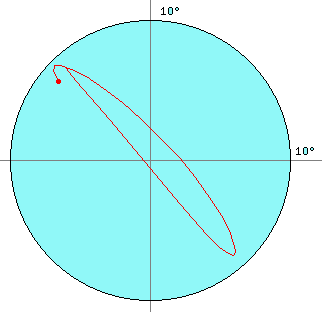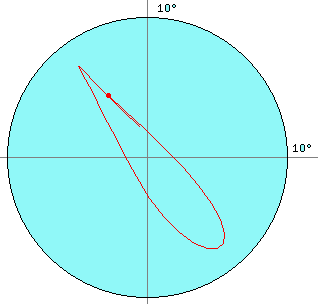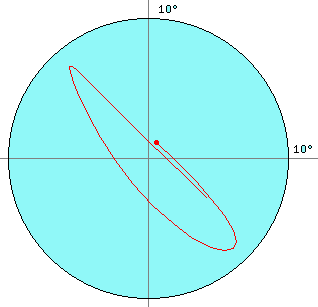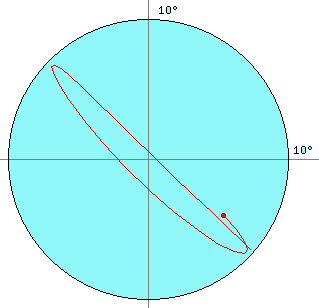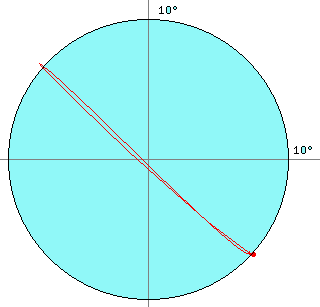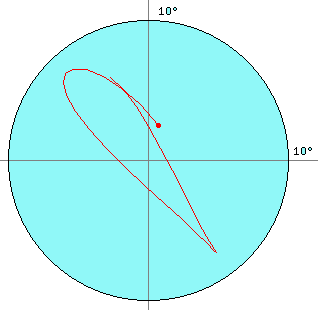|
|
GeoAstro Applets |
Astronomy |
Chaos Game |
Java |
Miscel- laneous |
The applet is
computing and visualizing the geocentric optical
libration of the Moon.
The red dot is located at 0° longitude and 0° latitude (selenographic). There are three
types of libration:
(From Wikipedia, the free encyclopedia) 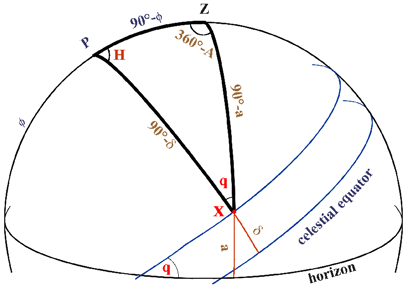 The parallactic angle
(position angle) q of a celestial body (X)
is the angle of the body's hour circle
(XP) and its vertical circle (XZ), or
between the declination circle (the path
of the body) and the local horizon.
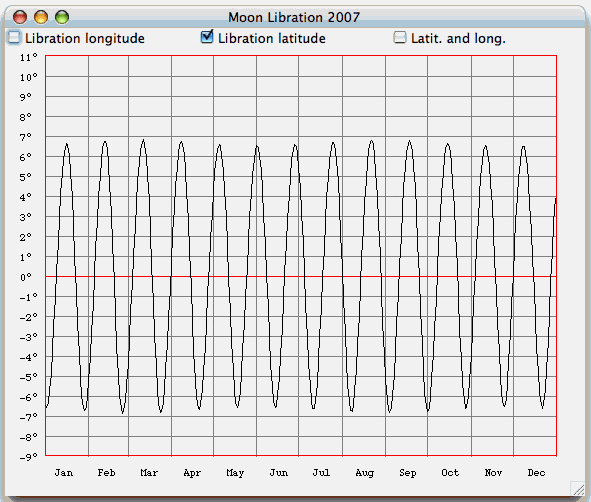 Libration in latitude 2007.
The maximum value is: 1.54° (tilt of the Moon's equator to the ecliptic) + 5.15° (tilt of the Moon's orbital plane in respect to the ecliptic) =6.69° 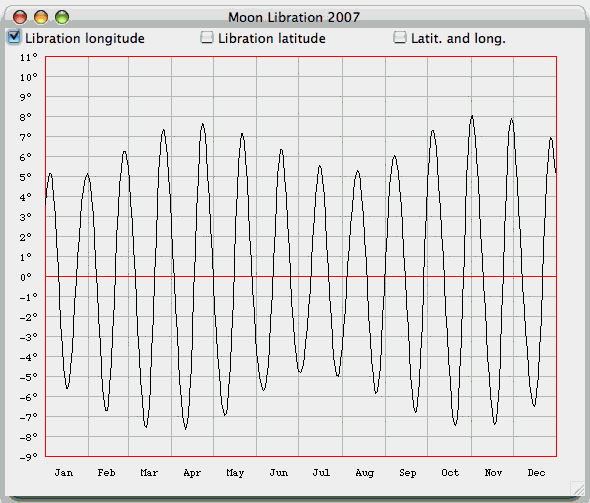 Libration in longitude 2007. The
libration in longitude creates an east-west
displacement of +/- 8.0°.
The curves below are showing the motion of the 'zero-point' of the lunar globe around its mean position, due to the librations in longitude and in latitude (Select "Lib. Path Month" from the Details menu). The curves repeat after a period of almost exactly 6 years, when the major axis has performed one complete revolution with respect to the line of nodes (cf. Meeus).
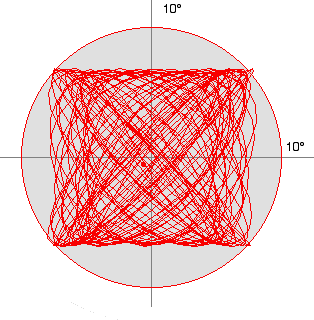 The 0ptical libration of the Moon from 2006, Jan 1 to 2009, Jan 1. Select "Lib. Path Year" from the Details menu: 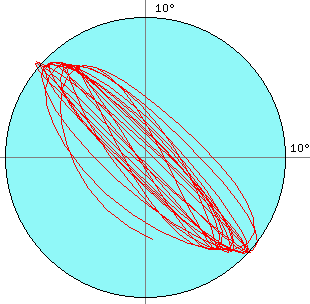 0ptical libration of the Moon 2006 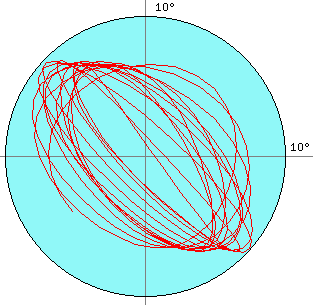 0ptical libration of the Moon 2007 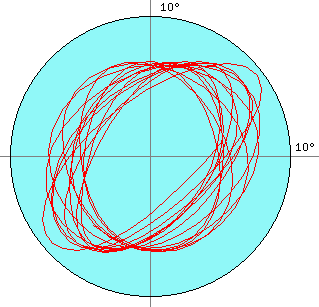 0ptical libration of the Moon 2008 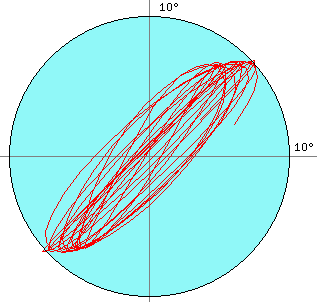 0ptical libration of the Moon 2009 Select "Data Lib." from the Details menu: 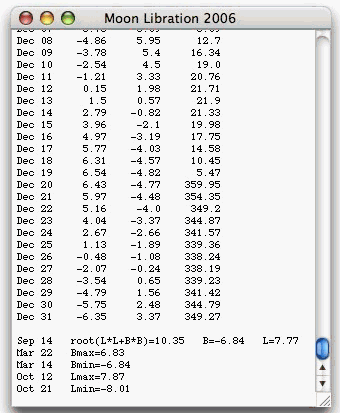 Scroll down to see extreme librations in longitude. The
mean periode of the libration in longitude
is the anomalistic month, 27.5545
days, the time between perigee passages. The result computed
by the MoonLibration applet (2006-2024) is
27.526 days.
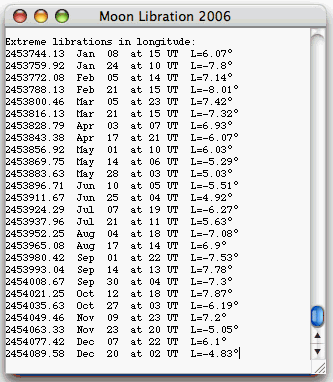 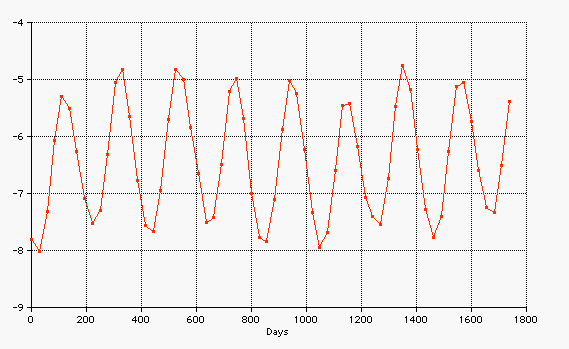 Diagram
of minimum libration in longitude, 2006-2010.
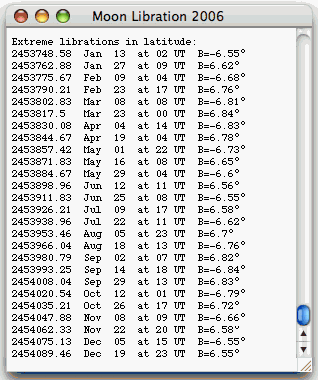 The
mean periode of the libration in latitude is
the draconic month, 27.212 days, the
time between node passages. The result
computed by the MoonLibration applet
(2006-2024) is 27.215 days.
|
|
|
|
|
|
|
Animation: Lunar libration with phase Apparent Disk of Solar System Object (NASA) Geocentric Ephemeris
for the Moon Ephemeris for
physical observation of the solar system bodies Moon Locator (JavaScript calculator) |
|
| Books | |
| Jean Meeus: Mathematical
Astronomy Morsels, Willmann-Bell, Richmond, Virginia, 2nd Printing 2000, ISBN 0-943396-51-4 Chapter 6: The librations of the Moon. Jean Meeus: Astronomical Algorithms, Willmann-Bell, Richmond, Virginia, 1rst English Edition 1991, ISBN 0-943396-35-2 Chapter 51: Ephemeris for Physical Observations of the Moon. |
©
2006-2023 J. Giesen
![]()
Last
modified: 2023 Oct 04

